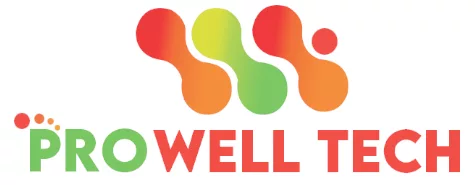Introduction: Traditional SEO in the Age of AI
As artificial intelligence (AI) reshapes digital technologies, search engines are undergoing one of their most significant transformations yet. For many SEO professionals and publishers, this rapid integration of AI has raised questions about the future of traditional search methodologies.
At Search Central Live NYC, Google’s Search Advocate John Mueller offered a reassuring perspective: AI is not replacing search. Rather, it’s enhancing it. Supported by insights from Google VP of Search Liz Reid, this message clarifies that while AI brings innovation, the foundational pillars of search—crawling, indexing, and ranking—remain essential.
This article outlines Mueller’s key takeaways, examines how AI integrates with traditional search functions, and provides actionable SEO strategies for navigating this evolving landscape.
Key Takeaways from John Mueller’s Address
AI is a Complement, Not a Replacement
Mueller emphasized that AI will augment, not replace, Google’s core search infrastructure. Crawling, indexing, and ranking still form the backbone of how information is discovered and delivered online.
“AI is not going to replace search.”
SEO Remains Critical
Mueller reiterated that SEO is still necessary, particularly for ensuring smooth crawling and indexing. AI won’t automatically surface content unless it’s well-structured and optimized.
Adaptation is Essential
Mueller urged SEO professionals to adapt, just as they have with past Google algorithm updates. This era of AI represents a new paradigm, but not a total overhaul.
Technical SEO Still Matters
He reaffirmed the importance of technical SEO—ensuring site crawlability, indexability, and structural health—as a key success factor even in an AI-driven search environment.
Google’s Stance: AI Enhances Core Search Processes
Google leadership, including Liz Reid, aligns with Mueller’s vision. AI is meant to refine and personalize search, not replace the search bar. Natural language processing, multimodal analysis, and personalized experiences are now layered on top of traditional search infrastructure.
Even advanced features like AI Overviews are powered by data from crawled and indexed content—they still depend on the foundational processes that SEO facilitates.
The Core Trio: Crawling, Indexing, Ranking in the AI Era
Crawling
AI can enhance how Googlebot discovers content, but it still relies on clear site architecture and accessible URLs. Structured internal linking and robots.txt files remain essential.
Indexing
Models like BERT and MUM help interpret content meaning more accurately. Still, well-organized, keyword-relevant content is necessary for inclusion in Google’s index.
Ranking
AI helps Google understand user intent and personalize results. But traditional ranking factors like authority, page speed, and backlinks continue to influence SERP placement.
Understanding AI Overviews: Opportunities and Challenges
AI Overviews are summaries generated by language models like Gemini. They often appear above organic results and offer quick answers to user queries.
How They Work:
- Use predictive models to anticipate user needs
- Link to relevant sources (sometimes indirectly related)
- Summarize complex topics for faster access
SEO Implications:
- Potential increase in “zero-click” searches
- Visibility in AI Overviews may rival traditional rankings
- Optimization must include structured content and clear takeaways
Why SEO is Still Essential
SEO enables AI to:
- Discover authoritative content
- Understand page structure and topic relevance
- Verify trustworthiness through E-E-A-T (Experience, Expertise, Authoritativeness, Trust)
Key Tactics in the AI Era:
- Use natural language and long-tail keywords
- Implement schema.org structured data
- Prioritize mobile-first and fast-loading design
- Highlight authorship and credentials
- Focus on user intent and value delivery
Strategic Recommendations for SEOs and Publishers
| Strategy | Why It Matters |
|---|---|
| Optimize for long-tail queries | Aligns with conversational AI search |
| Use clear headings and formatting | Helps AI and users quickly parse content |
| Implement structured data | Enhances AI understanding and eligibility for rich results |
| Build E-E-A-T signals | Increases trust and authority in AI rankings |
| Monitor AI Overviews | Evaluate visibility and refine targeting |
| Add multimedia content | Improve discoverability in multimodal AI features |
A Look Back: SEO’s Adaptation History
| Update | Year | Focus | SEO Impact |
| Panda | 2011 | Low-quality content | Emphasis on value and originality |
| Penguin | 2012 | Link manipulation | Focus on natural link-building |
| Hummingbird | 2013 | Semantic search | Prioritize intent over keywords |
| RankBrain | 2015 | Query interpretation | Improve UX and relevance |
| BERT | 2019 | Natural language | Embrace conversational writing |
| MUM | 2021 | Multimodal understanding | Create diverse, cross-format content |
Looking Forward: AI as a Tool for SEO Innovation
AI tools offer powerful opportunities:
- Automate content research and keyword discovery
- Personalize user journeys and recommendations
- Analyze UX friction points with behavioral data
Rather than replacing SEOs, AI amplifies their ability to deliver tailored, valuable content and user experiences.
Conclusion: A Synergistic Future for AI and Search
Google’s messaging is clear: AI is here to enhance, not erase, the foundations of search. SEO remains vital, especially for ensuring visibility in both traditional results and AI-powered features like Overviews.
Website owners and SEO professionals should embrace this evolution by reinforcing their technical foundations, creating high-quality content, and optimizing for new AI-centric opportunities.
The future of search is not a zero-sum game between AI and SEO—it’s a synergistic blend of both.





